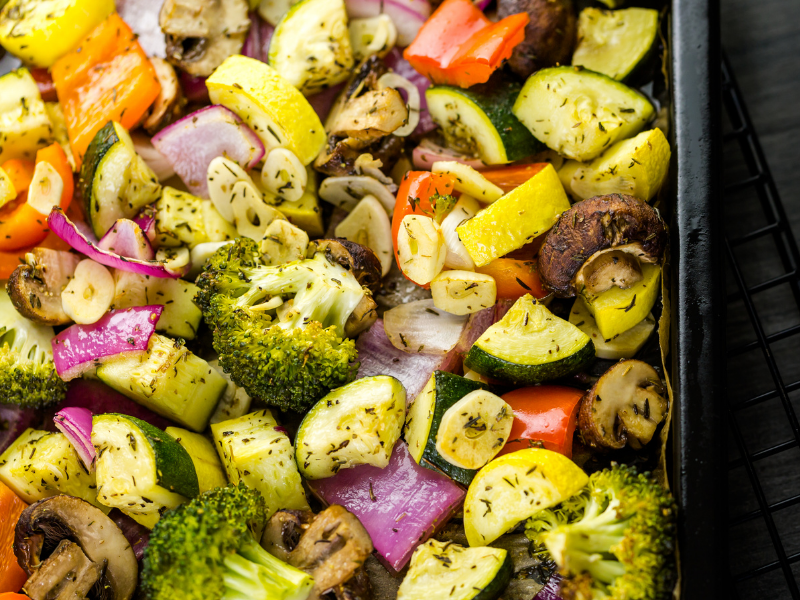4 Easy Tips to Eat Fresh During the Winter
The cold days of winter call for hearty soups and warming comfort foods; despite the weather, you can still ‘Eat Fresh’. Winter might not have the same fresh bounty as summer (at least here in Pennsylvania), but there are still many delicious and affordable ways to eat fruits and vegetables this time of year.
“Cooking with root vegetables, using canned and frozen produce, and adding fresh herbs can all help you to ‘Eat Fresh’ over the winter,” says Catie Mahoney, MS, Director of Food Access & Education, “Our winter session of Eat Fresh focuses on increasing the consumption of veggies by working with participants to add more produce to dishes they already make at home, build community through conversation and knowledge sharing, overall have fun and experiment in the kitchen.
Here are four tips to help you Eat Fresh this winter:
Consider Canned and Frozen
We love the crisp snap of an in-season snap pea or the juicy bite of a summertime tomato, but in the winter, canned or frozen produce is an excellent alternative for flavor and cost too. Access to fresh food can be a challenge, and if you’re looking for ways to add more fruits and veggies, frozen and canned options are convenient, affordable, and nutritious, no matter the time of year. Add these veggies to soups, stews, stir-fries, pasta, and much more. A great way to prep for the winter during the growing season is to freeze or can your veggies or fruits so that when winter comes along, you’ll be ready to add them to your meals.
Get Roasting
“Roasting vegetables is one of my favorite ways to tell Eat Fresh participants to make veggies tasty, especially for kids,” Mahoney says. “Roasting is easy, delicious, and can bring so much flavor. By simply adding some garlic powder, salt, pepper, and maybe a little cayenne or red pepper if you like some heat – to just about any vegetable, you have a great foundation to a warming, comfort meal.” In addition, roasting a big batch of veggies is a simple task to increase your vegetable consumption. “I like to make a big batch of roasted veggies that I will add to my meals during the week. For example, roasted veggies are great in salads, sandwiches, burritos, frittatas, pizza, really any dish.”
Grab Some Greens
Bring some color to an otherwise beige dish by adding dark leafy greens like kale, spinach, or Swiss chard. Throw a few handfuls of kale into soups and stews – a great way to bring fresh to canned soups too! Stir some spinach into your scrambled eggs (and some roasted veggies too). This is also a great way to reduce food waste by using greens that aren’t at their prime.
Add flavor with herbs and spices
Using spices and herbs to season foods can make them tasty without adding fat, salt, and sugar. Cooking with herbs and spices can help add depth to canned tomatoes, brighten up a canned stew or bring a different flavor profile to roasted potatoes. Although some spices can be expensive (whoa saffron!) many can be easily found at discount grocers and even dollar stores. Rosemary, thyme, Italian blend, cumin, red pepper, and garlic can make a big flavor impact on your cooking. Fresh herbs are best used at the end of cooking or just before serving the food. Brighten up an easy meal like canned beans and tomatoes on rice by adding fresh cilantro. Make mashed potatoes a meal by adding garlic (and greens) when mashing, then serve under roasted veggies and top with parsley. Start adding a quarter to half teaspoon of dried spices and a tablespoon of fresh to you to your next dish and see what new flavors you can bring to the table.
“Once you start adding veggies and spices to recipes – especially those that you are familiar with,” says Mahoney, “you’ll start seeing all kinds of ways to Eat Fresh and will be encouraged to try new foods too!”
A program of the Chester County Food Bank, Eat Fresh allows participants to gain positive attitudes toward a variety of nutritious foods including fresh fruits, vegetables, and whole grains. At the end of each session, participants receive a “CSA style” share of produce including items featured in the recipes prepared in class. Tune in to our Eat Fresh channel for inspiring tips and tricks.
Editor’s Note: This post was originally published in January 2022 and has been updated for accuracy and comprehensiveness.
Photos: Canva; Chester County Food Bank

